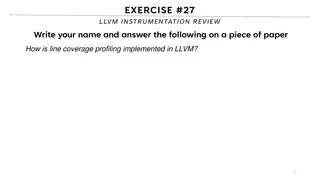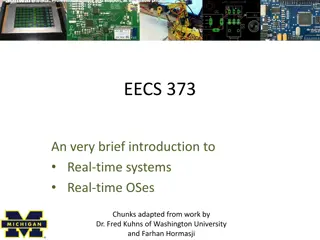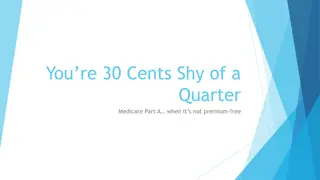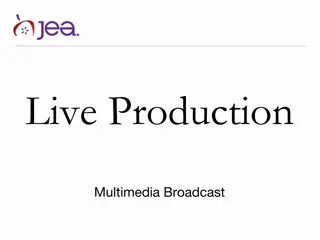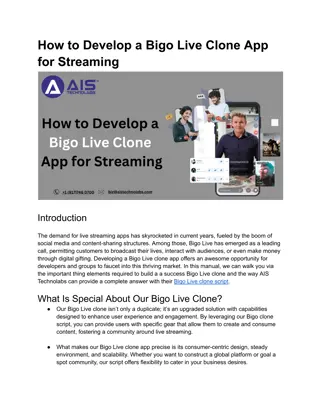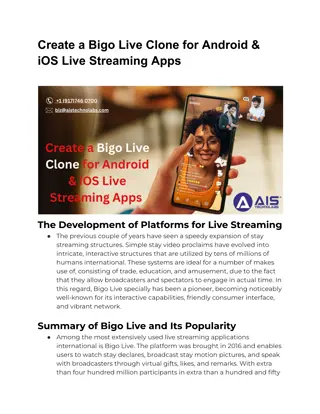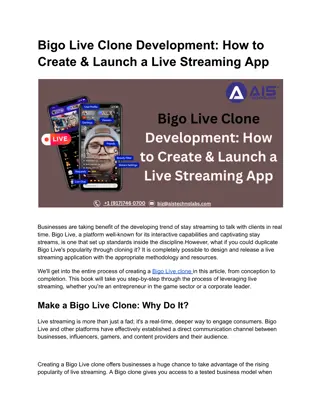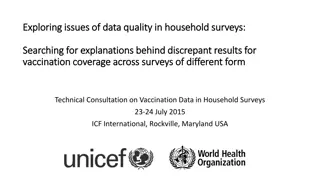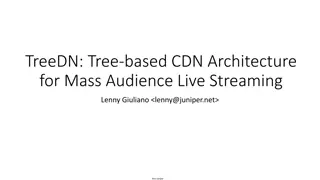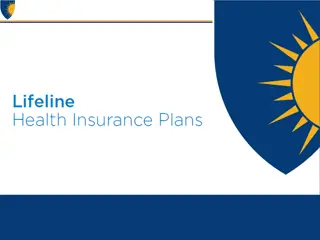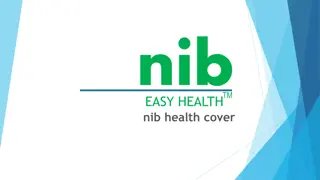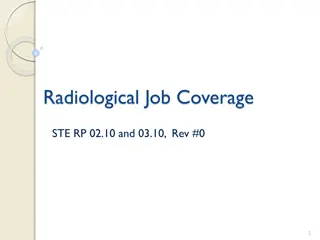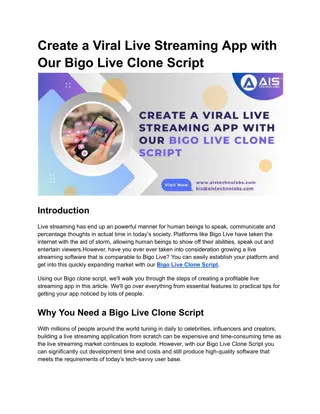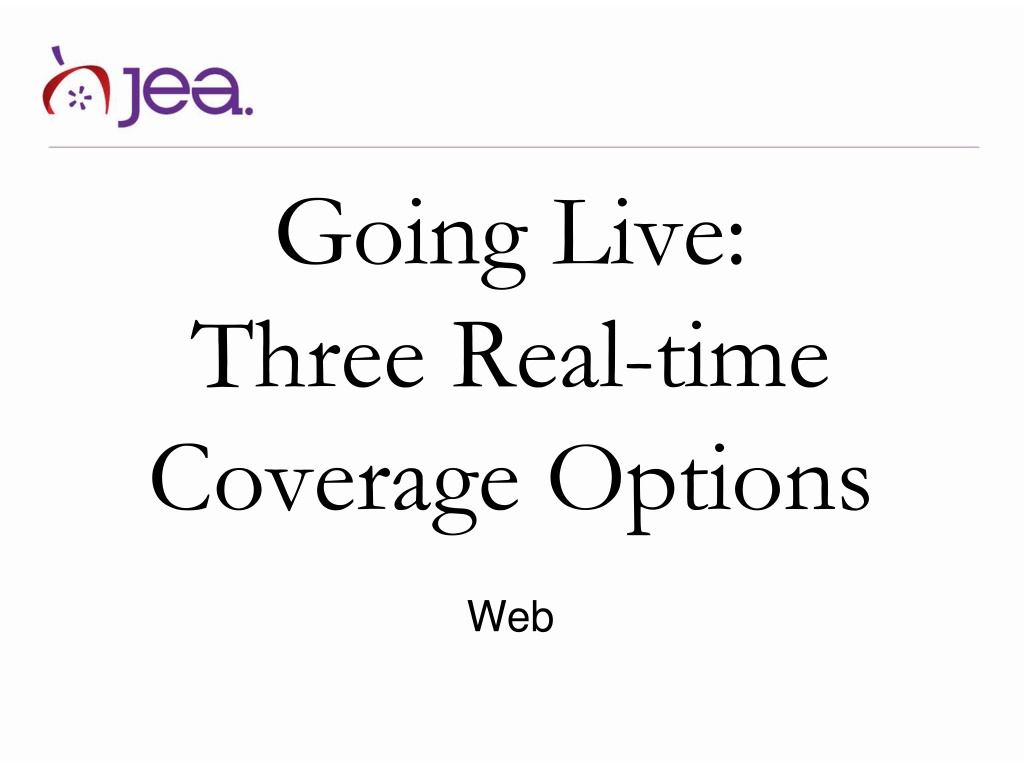
Evolution of Live Coverage: Past to Present
Explore the evolution of live news coverage from significant historical events like JFK's assassination to modern-day real-time coverage options using technologies like Google Hangouts and ScribbleLive. Learn about the common elements shared by these events, changes over the years, and how live coverage has adapted to the Internet age with smartphones and computers, offering diverse visual storytelling options.
Download Presentation

Please find below an Image/Link to download the presentation.
The content on the website is provided AS IS for your information and personal use only. It may not be sold, licensed, or shared on other websites without obtaining consent from the author. If you encounter any issues during the download, it is possible that the publisher has removed the file from their server.
You are allowed to download the files provided on this website for personal or commercial use, subject to the condition that they are used lawfully. All files are the property of their respective owners.
The content on the website is provided AS IS for your information and personal use only. It may not be sold, licensed, or shared on other websites without obtaining consent from the author.
E N D
Presentation Transcript
Going Live: Three Real-time Coverage Options Web
JFK assassinated Home audiences watch as newscasters deliver news that President Kennedy was assassinated.
Armstrong walks on moon Oh, thank you television for letting us watch this one! former astronaut Wally Schirra, Jr., on July 20, 1969, after Neil Armstrong took his first step on the moon
9/11 Terrorists attack World Trade Center
Quick Response 1. What do all three live news examples share in common? Do you notice any changes from the first (1963) to the third (2011)? 1. What does live coverage look like now, in an Internet age when many people have Internet access from devices like smartphones and computers? What's different?
Live video how to Google Hangouts is one option (free) Must be a visual story Can range from a single handheld camera to a multi-camera shoot Hangout video remains archived on YouTube after live broadcast
Live video things to consider Must be a visual story Requires reliable broadband Audience needs advance notice to "tune in" Think about your audience and when they are available Reporters must make real-time decisions about shots, etc
Live blogging how to ScribbleLive is one option (free) Less visual but can integrate outside media Can pull from public social media posts Possible to prepare some posts in advance Embed directly into post on site
Live blogging things to consider Audience needs advance notice to "tune in" or can read transcript after Updates can be made directly from a smartphone app For event coverage, multiple reporters can contribute Video and photos can be integrated as well Audience gets to participate
Social media updates Can use Twitter or Facebook Reporting can become part of a larger conversation (national/international) Easy to update with quick bursts of information Free and relatively effortless
Social media updates Requires a device connected to Internet or a cellular network Reporters need advance training beforehand to ensure professionalism of post content, style Curation service like Storify could be used to present coverage directly in a post on the news website
Application Other than breaking news, what might audiences like to know in real time? Brainstorm three school-related live coverage ideas with a partner.
Application Other than breaking news, what might audiences like to know in real time? sports game plays, results major announcements political election results others?
Choosing a live coverage solution 1. Is the coverage planned or unplanned, like a breaking news story? 2. What resources (including the number of trained reporters) are available to produce the coverage? 3. Is this a highly visual story?




